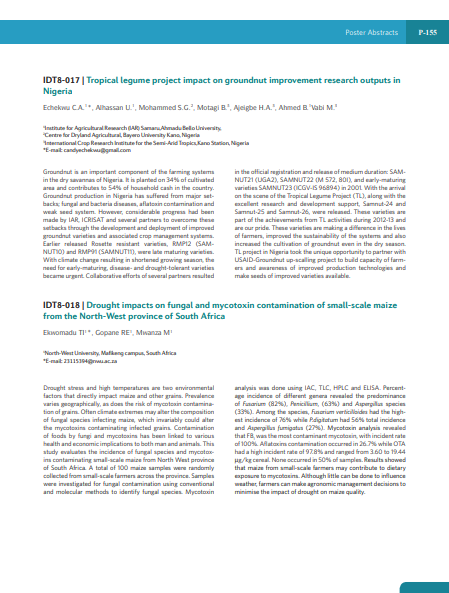The Tropical Legume project’s impact on groundnut improvement research outputs in Nigeria
Summary
Groundnut is an important component of farming systems in the dry savannas of Nigeria. It is planted on 34% of the cultivated area and contributes to 54% of household income nationwide. Although groundnut production in Nigeria has suffered from major setbacks, including fungal and bacterial diseases, aflatoxin contamination, and weak seed systems, considerable progress had been made by IAR, ICRISAT, and several partners to overcome these setbacks through the development and deployment of improved groundnut varieties and associated crop management systems. Rosette-resistant varieties released earlier, RMP12 (SAMNUT10) and RMP91 (SAMNUT11), were late-maturing varieties. With climate change resulting in a shortened growing season, the need for early-maturing, disease- and drought-tolerant varieties has become urgent. The collaborative efforts of several partners resulted in the official registration and release of medium-duration varieties, SAMNUT21 (UGA2) and SAMNUT22 (M 572, 80I), and early-maturing varieties, SAMNUT23 (ICGV-IS 96894). After the initiation of the Tropical Legume Project (TL), Samnut-24, Samnut-25, and Samnut-26 were also released. These varieties are making a difference in the lives of farmers, improving the sustainability of agricultural systems, and increasing the cultivation of groundnut – even during the dry season. In Nigeria, the project also took the opportunity to partner with a USAID groundnut up-scaling project to build the capacity of farmers and improve their awareness of improved production technologies.
Open resource Download resource Access resource on external site

